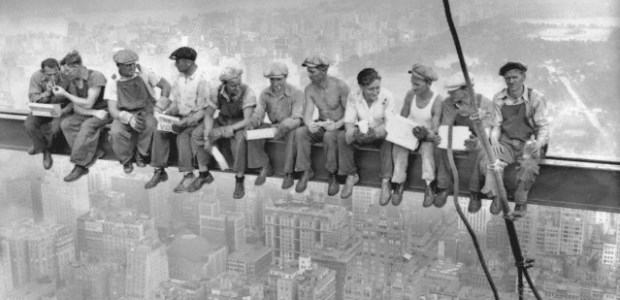
Celebrating Labor Day 2016
"The best way we, in the occupational safety and health community, can honor workers today and throughout the year, is to ensure safe and healthful working conditions for every man and woman—young and old alike," NIOSH Director Dr. John Howard wrote in his Labor Day 2016 message.
Labor Day 2016 is here: a day to remember the contributions of U.S. workers, as well as occupational safety and labor pioneers such as Alice Hamilton and Frances Perkins, and to honor workers who have lost their lives or been injured on the job.
NIOSH Director Dr. John Howard spoke in his Labor Day 2016 message about the real meaning of the holiday: "To many, Labor Day signifies the end of summer vacations, the beginning of a new school year or a time to find bargains. It's important to remember Labor Day is much more than just a retail holiday or a day off of work. We must not forget it is a day to celebrate workers—from teachers to retail workers, from stockbrokers to commercial fisherman— for their contribution to America's strength and prosperity.
"The best way we, in the occupational safety and health community, can honor workers today and throughout the year, is to ensure safe and healthful working conditions for every man and woman—young and old alike. In many ways, the proverb, 'it takes a village' rings true as we pursue this mission. The decreases we’ve seen in workplace injuries and deaths over the last few decades can likely be attributed to the combined efforts of employers, workers, federal agencies, unions, trade associations and many others. Successful partnerships are the cornerstone of the National Occupational Research Agenda (NORA), which was established by NIOSH in 1996. NORA is a research framework, both for NIOSH and the nation, designed to stimulate innovative research and improved workplace practices. Come this fall, we will mark the end of the second decade of this initiative and usher in the third with an enhanced collaborative structure intended to continue our joint efforts to address major health and safety issues affecting workers. We look forward to collaborating with current and new partners as we move forward to the next decade and beyond."
The U.S. Department of Labor celebrated working Americans by sharing a Spotify playlist with songs inspired by the workers who power the country, and DOL's Labor Day 2016 page contains information about the history of Labor Day.
According to the U.S. Bureau of Labor Statistics, the first observance of Labor Day "was likely on Sept. 5, 1882, when some 10,000 workers assembled in New York City for a parade. The parade inspired similar events across the country, and by 1894 more than half the states were observing a 'workingmen's holiday' on one day or another. Later that year, with Congress passing legislation and President Grover Cleveland signing the bill on June 29, the first Monday in September was designated 'Labor Day.'"
According to BLS, there were 158.5 million people age 16 and over in the nation's labor force as of May 2016. The largest occupations as of May 2015, in terms of the number of employees, were:
- Retail salespeople: 4,612,510
- Cashiers: 3,478,420
- Combined food preparation and serving workers, including fast food: 3,216,460
- Office clerks: 2,944,420
- Registered nurses: 2,745,910
- Customer service representatives: 2,595,990
- Waiters and waitresses: 2,505,630
- Laborers and freight, stock, and material movers: 2,487,680
- Secretaries and administrative assistants: 2,281,120
- Janitors and cleaners: 2,146,880
President Obama devoted his weekly address on Sept. 3 to Labor Day. He spoke of the important contributions of labor unions, recent increases in the minimum wage in several states, equal pay, and increases in the number of Americans who have health insurance.